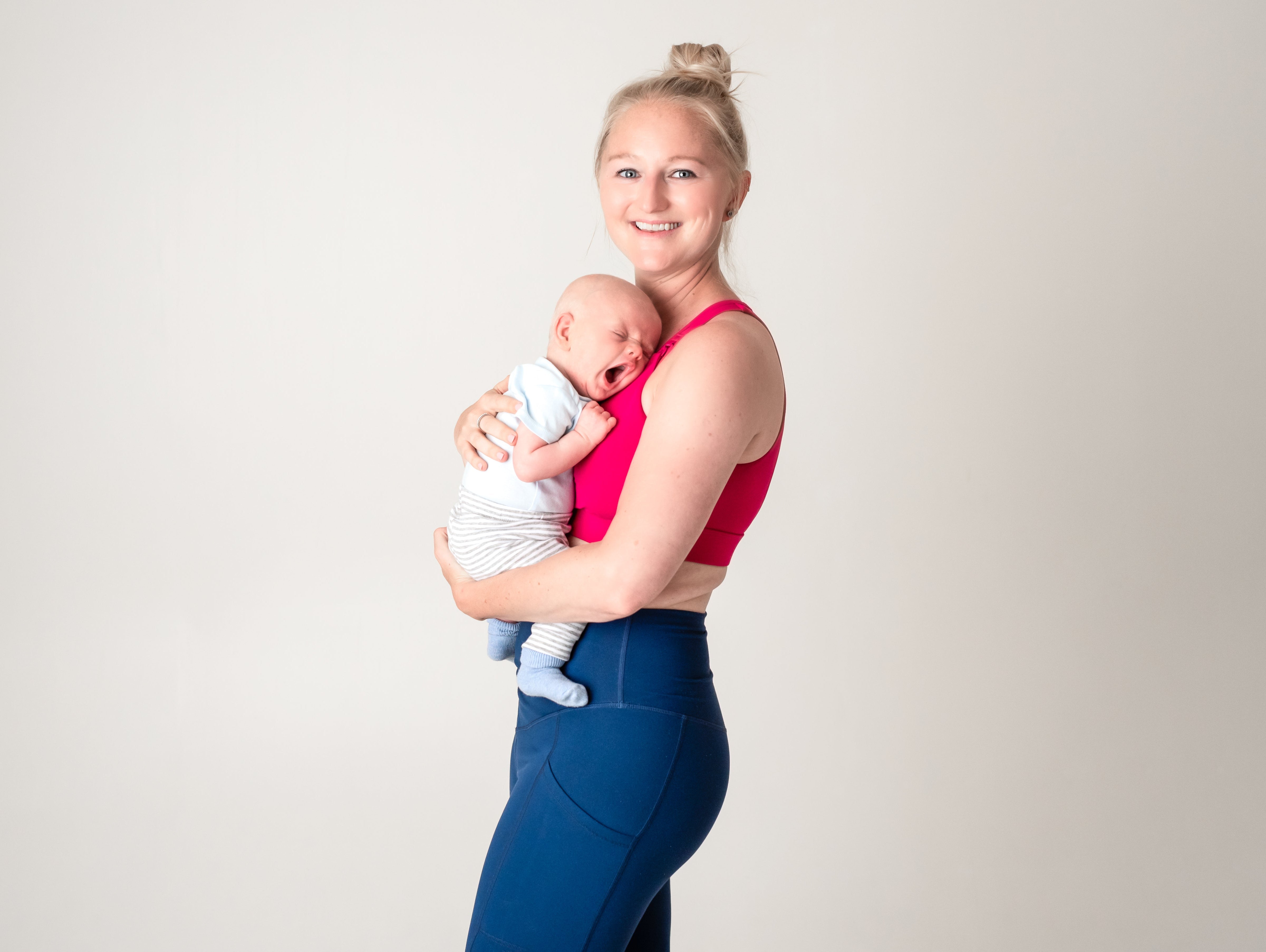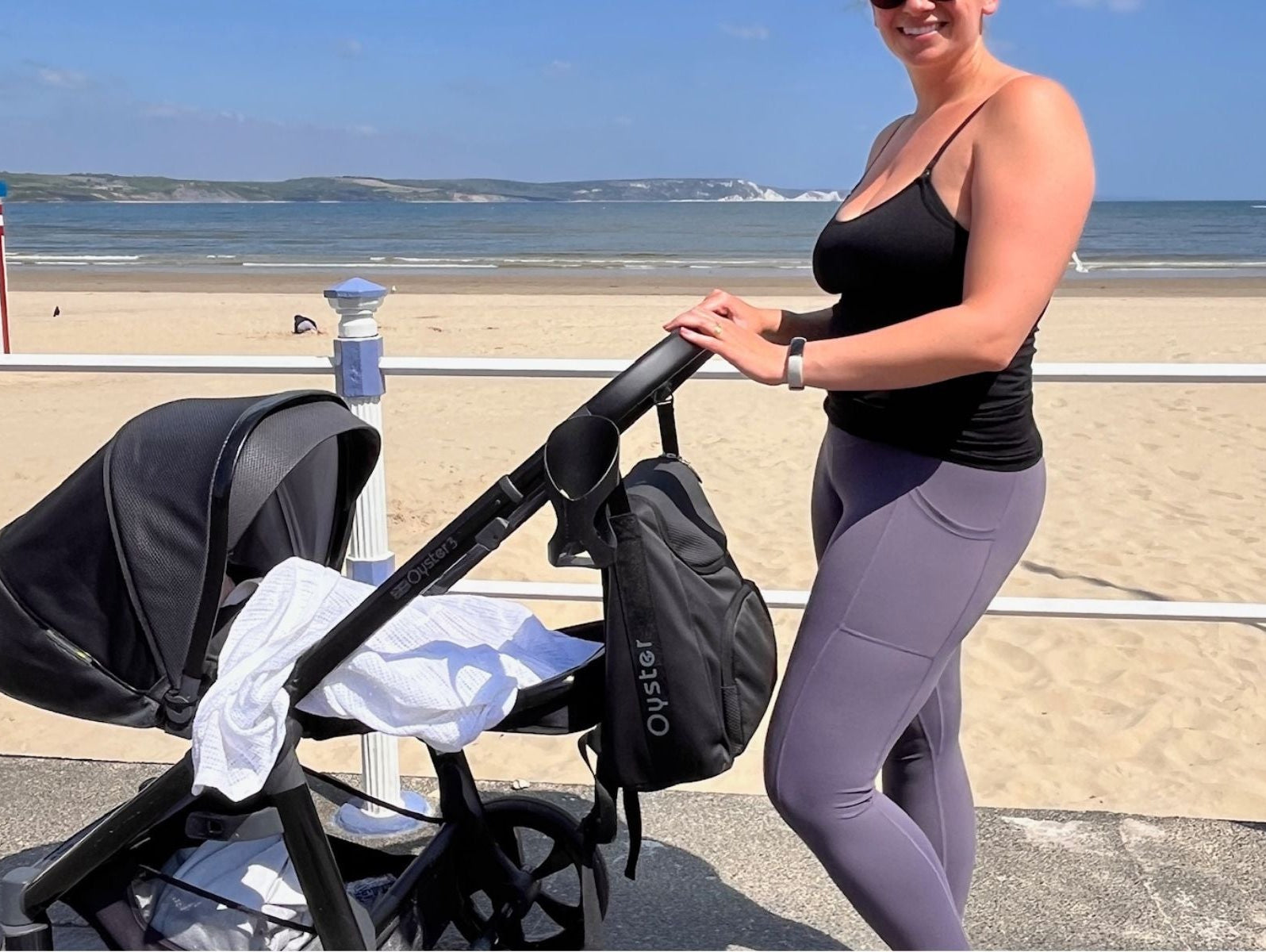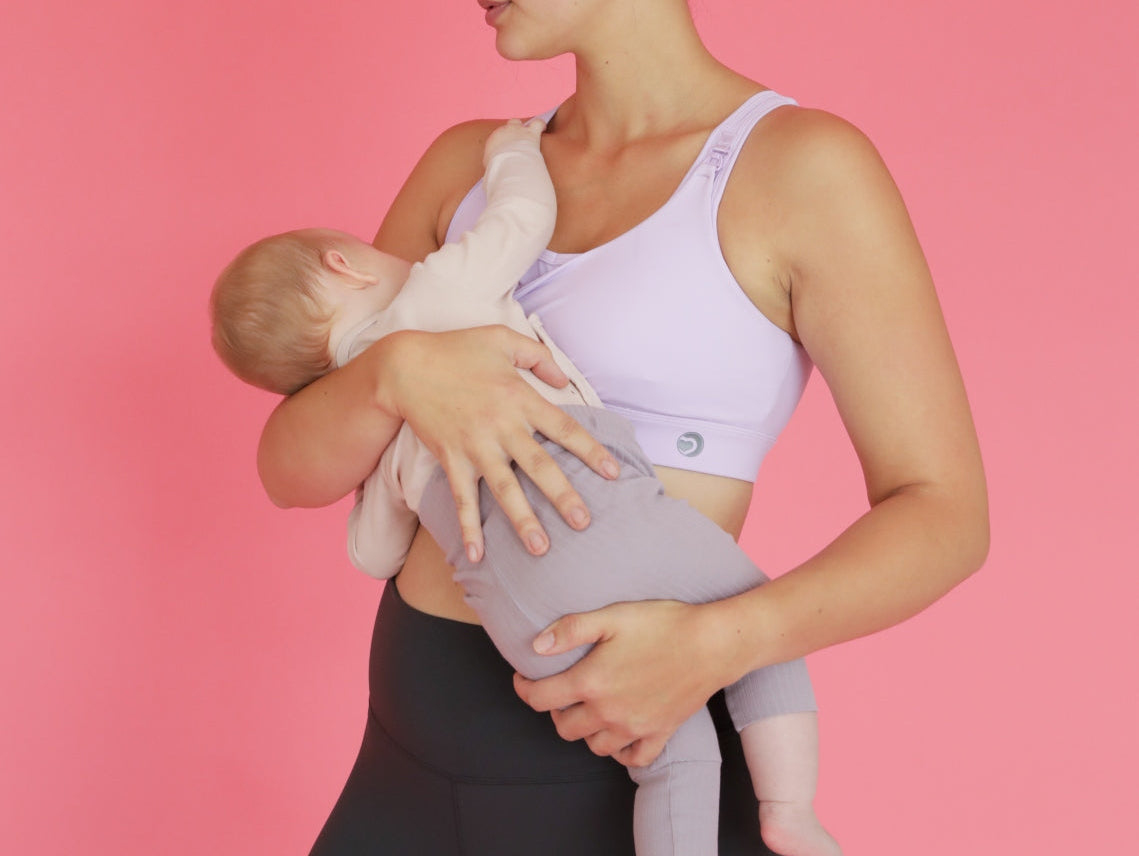There’s no doubt about it: pregnancy and childbirth are major life changing events. And running – a high impact sport – places a lot of demand on your body. To start running after having a baby, your body needs time to heal and regain its strength.
According to Emma Brockwell, mother, pelvic health physiotherapist and author of Why Did No One Tell Me there’s a lot of conflicting advice out there about returning to running after pregnancy. “The evidence and the information that health, fitness and medical professionals deliver to women is a little bit confusing – some say 6 weeks, some say 6 days, some say 6 months.”
With no national, or even international guidelines, to provide some sort of framework for women who wish to return to running after having a baby, Brockwell co-authored ‘Guidance for medical, health and fitness professionals to support women in returning to running postnatally’ with Gráinne Donnelly, physiotherapist and team lead for pelvic health physiotherapy in both NHS and private sector in N. Ireland, and Tom Goom, clinical lead at The Physio Rooms and a specialist in the management of running injury.
The aim? To offer clearer guidance to women returning to running postnatally. “I wanted to extrapolate what evidence was out there and devise some sort of guidelines that would provide women something to go on,” Brockwell says.
1. Wait around 12 weeks before running after having a baby
The ideal recommended recovery time frame before return to running, according to the study, is 12 weeks. “You should consider having a pelvic health check with a pelvic health physiotherapist and explore your pelvic health – even if you don’t have symptoms – because running is such a high impact sport, you should be thinking about rehabilitation prior to returning to it,” she advises.
For some women, you might be ready to return to running at 10 weeks, for others, it might be 18 weeks. “The 12 week mark is really a mark where we exploited evidence that suggested that most musculoskeletal ‘injuries’ looking for a return to sport are around 12 weeks. But there is just such a limit of evidence out there, that figure could change when more research is done.”
2. See a pelvic health physiotherapist
Brockwell believes that we need to start giving pregnancy and childbirth the same level of consideration for recovery that we do for ligament, tendon, nerve and muscle injuries around the body. So, just as a footballer with an ACL injury wouldn’t be allowed to return to playing matches until they had gone through extensive rehabilitation and assessments, mothers should also see a specialist after childbirth prior to getting the thumbs up to exercise.
“All postnatal women, regardless of delivery mode, should be assessed by a pelvic health physiotherapist prior to returning to high impact sport,” says Brockwell. “Any signs or symptoms of pelvic floor dysfunction indicates further management is needed prior to starting running after pregnancy.”
3. Start small – walk before you run
Of course, prescribed rehabilitation will vary depending on the individual. But, for most (in addition to pelvic floor muscle exercises), it’s best to start small – and walk before you run. Start with time-based specific goals – such as, 10 minutes walking on the first day, 15 minutes on the next, 20 minutes the day after and gradually build yourself up.
“Walking is hugely underestimated,” says Brockwell. “You don’t just have to stroll or saunter, you can go for a good paced walk and get a nice cardiovascular workout.”
Once you’re 12 weeks post-natal and you’ve passed all the recommended tests, you can try a graded to return to running – such as the NHS ‘couch to 5km’ plan.
For serious runners with an event to train for, consider perhaps working with a running coach and remember to build up training volume (e.g. distance/time ) before intensity. Monitor signs and symptoms and modify your program if you need to.
4. Opt for low impact exercises
From basic core exercises such as pelvic tilt (where you get down on your hands and knees and draw your stomach in towards your spine) to squats and lunges, introducing low impact exercises before you start running again will help build up both your physical and mental strength. After all, your body will be adjusting to very little sleep and the demands of a newborn, so be patient and kind to yourself.
“Cycling or swimming – when you’ve stopped bleeding – is great as well,” adds Brockwell.
5. If you delivered via C-section, you may need to wait a bit longer
If you’ve had a caesarean, you may have to wait longer to pound the pavements. Many women who’ve had major abdominal surgery are told not to lift anything heavier than their babies at first. But it really does depend on how strong your pelvic floor muscles are.
“It’s all about considering your symptoms, considering how strong your pelvic floor is, and how strong you are in general – and you as an individual might not be able to make that assessment without guidance from a physiotherapist,” reminds Brockwell.
6. Wear supportive clothing
For female runners, choosing the right sports bra is comparable to getting the right pair running shoes – if you pick one that’s too big or too tight, it can make running unbearable.
But nine months of pregnancy means your breasts are probably bigger and more sensitive. Easy access for your baby is also key – something that most sports bras don’t tend to build into their designs. Opt for a running bra that offers support over compression, and made especially for nursing mothers.
You'd never guess this sports bra is built for breastfeeding, too, thanks to its highly discreet front open clips.
7. Don't worry about running impacting breastfeeding
There’s no sturdy evidence that exercise is bad for breast milk or breastfeeding.
 “After 3 months post-natal the influence of breastfeeding hormones aren’t as strong as we originally thought they were,” says Brockwell. “As long as you’re comfortable – I would suggest breastfeeding before you run – I would encourage them to run just as much as someone who’s bottle feeding.” For more information on breastfeeding and exercise read our blog post on Breastfeeding and Exercise - Everything you Need to Know
“After 3 months post-natal the influence of breastfeeding hormones aren’t as strong as we originally thought they were,” says Brockwell. “As long as you’re comfortable – I would suggest breastfeeding before you run – I would encourage them to run just as much as someone who’s bottle feeding.” For more information on breastfeeding and exercise read our blog post on Breastfeeding and Exercise - Everything you Need to Know
Having built up moderate intensity physical activities over a minimum period of three months after childbirth and in the absence of any signs or symptoms of pelvic floor or abdominal wall dysfunction, more intense activities, such as running, can gradually be resumed (e.g. NHS Couch to 5k). If you experience any of these signs or symptoms, more intense physical activity should not be resumed and referral to a specialist pelvic health physiotherapist is necessary.
Every person recovers from birth at a different rate – remember to pay attention to your body’s cues and consult with a medical professional before you begin any exercise regimen.



